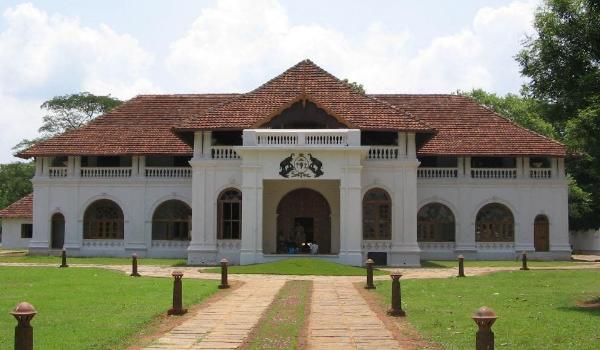Exploring the History of Mattancherry Palace: A Window into Kochi’s Regal Past

Strong 8k brings an ultra-HD IPTV experience to your living room and your pocket.
Mattancherry Palace is often referred to as the Dutch Palace. It stands as a testament to the rich and diverse history of Fort Kochi in Kerala, India. This historic landmark, with its intricate architecture and vibrant murals, offers a fascinating glimpse into the past, reflecting a blend of cultural influences and regal heritage. From its origins as a Portuguese gift to its renovation by the Dutch, Mattancherry Palace encapsulates the confluence of European and local traditions. This article delves into the Mattancherry palace history, exploring its origins, architectural evolution, and significance in Kerala's historical landscape.
Origins and Construction
The history of Mattancherry Palace dates back to the 16th century when it was initially constructed by the Portuguese. The palace was built in 1555 as a gift to the Raja of Kochi, Veera Kerala Varma, to strengthen diplomatic relations between the Portuguese Crown and the Kochi royal family. The Portuguese, who were keen on securing their trade routes and political influence in the region, recognized the strategic importance of maintaining good relations with the local rulers.
The construction of the palace was completed with the intent to serve as a royal residence and administrative center. The design of the palace reflects the architectural style prevalent during the Portuguese era, characterized by spacious courtyards, large rooms, and intricately carved wooden ceilings. The building's layout and features were intended to accommodate the needs of the Raja and his court, providing a grand setting for ceremonial and administrative functions.
Dutch Renovation and Architectural Evolution
In the 17th century, the Dutch East India Company, which had established a strong presence in Kochi, undertook significant renovations of the palace. The Dutch acquired control of Kochi in 1663, and during their rule, they made substantial modifications to the original Portuguese structure. This period of renovation added a distinctive Dutch influence to the palace’s architecture, resulting in a unique blend of Portuguese and Dutch styles.
The Dutch renovations included the addition of a new wing to the palace, which enhanced its grandeur and functionality. The Dutch also made improvements to the palace’s fortifications and structural integrity, ensuring that it met their administrative and defensive needs. The fusion of Portuguese and Dutch architectural elements is evident in the palace’s design, with its large courtyards, high ceilings, and ornate woodwork.
Architectural Features and Design
Mattancherry Palace is renowned for its distinctive architectural features, which reflect both its Portuguese origins and Dutch renovations. The palace is characterized by a blend of European and local architectural styles, making it a unique example of historical architectural fusion.
1. Layout and Structure:
The palace is built around a central courtyard, a common feature in traditional Kerala architecture. The layout includes several large rooms and halls, which were used for various functions, including administrative meetings, ceremonies, and residential purposes.
2. Woodwork and Carvings:
The palace’s wooden ceilings and pillars are adorned with intricate carvings, showcasing the craftsmanship of the period. The woodwork features elaborate patterns and designs, reflecting both Portuguese and Dutch influences.
3. Murals:
One of the most notable features of Mattancherry Palace is its collection of murals. These vibrant paintings depict scenes from Hindu epics such as the Ramayana and Mahabharata. The murals are renowned for their detail and color, offering insight into the artistic traditions of the time.
Historical Significance and Role
Mattancherry Palace played a crucial role in the history of Kochi and the region. Its significance extends beyond its architectural beauty, encompassing its role as a royal residence, administrative center, and cultural hub.
1. Royal Residence:
The palace served as the residence of the Raja of Kochi and his family. It was a center of political and ceremonial activities, hosting important events and gatherings. The palace’s design accommodated the needs of the royal family, providing a grand and functional living space.
2. Administrative Center:
During the Dutch period, the palace functioned as an administrative center, overseeing the governance of Kochi and its surrounding areas. The Dutch made use of the palace for administrative meetings and functions, reflecting its importance in regional administration.
3. Cultural Hub:
The palace also played a role in the cultural life of Kochi. It hosted various cultural events, including performances and ceremonies, contributing to the region’s vibrant cultural heritage. The murals and artifacts within the palace offer a glimpse into the artistic and cultural traditions of the time.
Preservation and Restoration
The preservation of Mattancherry Palace is a testament to the efforts made to safeguard Kerala’s historical and cultural heritage. The palace has undergone various restoration projects over the years to maintain its structural integrity and historical authenticity.
1. Restoration Efforts:
The Archaeological Survey of India (ASI) and other conservation agencies have been involved in the restoration and maintenance of the palace. These efforts aim to preserve the palace’s architectural features, murals, and artifacts, ensuring that they remain accessible to future generations.
2. Museum and Exhibition:
Today, Mattancherry Palace functions as a museum, showcasing its historical and cultural significance. The museum exhibits a range of artifacts, including royal regalia, weaponry, and historical documents. The palace’s role as a museum enhances its educational value, providing visitors with insights into Kerala’s history and heritage.
Visitor Experience
Visiting Mattancherry Palace offers a unique opportunity to explore Kerala’s rich history and cultural heritage. The palace’s architecture, murals, and artifacts provide a comprehensive understanding of the region’s past and its connections with European colonial powers.
1. Exploring the Palace:
Visitors can explore the palace’s various rooms, courtyards, and exhibits, gaining insights into its historical significance and architectural features. The murals and artifacts offer a glimpse into the artistic and cultural traditions of the time.
2. Guided Tours:
Guided tours are available for those interested in a deeper understanding of the palace’s history and significance. Local guides provide detailed information and context, enhancing the visitor experience.
Conclusion
Mattancherry Palace stands as a remarkable evidence of the rich and diverse history of Fort Kochi. From its origins as a Portuguese gift to its Dutch renovations and cultural significance, the palace offers a unique glimpse into Kerala’s regal past. Its blend of architectural styles, vibrant murals, and historical artifacts make it a valuable cultural and historical landmark. By exploring Mattancherry Palace, visitors can gain a deeper appreciation of Kerala’s heritage and the influences that have shaped its history.
Note: IndiBlogHub features both user-submitted and editorial content. We do not verify third-party contributions. Read our Disclaimer and Privacy Policyfor details.


